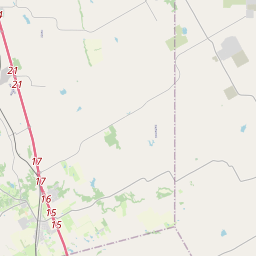Lakeview Memorial Park Cemetery







Source: Ellis County Genealogical Society, Ellis County, Texas Cemetery Records XI; Parsons, Kim, Ref. to Texas Cemeteries, 1988; TxDot map 1990
To address the problem of cemetery destruction and to record as many cemeteries as possible, the Texas Historical Commission offers the Historic Texas Cemetery designation.
The Historic Texas Cemetery designation was developed in 1998 to help protect historic cemeteries by recording cemetery boundaries in county deed records to alert present and future owners of land adjacent to the cemetery of its existence. Every county in Texas has at least one cemetery designated as a Historic Texas Cemetery through this program. The HTC designation is the first step toward preservation of a historic cemetery.
A cemetery is eligible for designation if it is at least 50 years old and is deemed worthy of recognition for its historical associations. The very nature of a cemetery being a landmark of a family’s or community’s presence is considered to validate the criteria of historical associations. Any individual, organization, or agency may submit a request for designation.
The Texas Rangers, a famous law enforcement agency, were first organized in 1835 to protect settlers from Native American attacks.
The area that is now Ellis County was initially inhabited by Native American tribes, including the Caddo and Comanche. However, in the mid-1830s, European settlers began to arrive and establish homesteads in the region. These settlers were drawn to the fertile land and opportunities for farming and ranching.
During the Civil War, Ellis County was deeply divided, with residents supporting both the Union and the Confederacy. The county was the site of several skirmishes and raids, and endured a significant amount of destruction as a result. After the war, Ellis County began to rebuild and experienced a period of growth and development.
In the late 19th and early 20th centuries, Ellis County saw the rise of industries such as cotton farming, cattle ranching, and oil production. The arrival of the railroad in the late 1800s further fueled the county's economic growth. Today, Ellis County remains an agricultural powerhouse, with a strong presence in the cotton and cattle industries, and is also home to a diverse range of businesses and thriving communities.
Ellis County Timeline
This timeline provides a concise overview of the key events in the history of Ellis County, Texas.
- 1849 - Ellis County is established from Navarro County.
- 1850 - Waxahachie is selected as the county seat.
- 1853 - The county courthouse is built.
- 1881 - The Texas Central Railroad reaches Waxahachie, boosting the local economy.
- 1883 - Southwestern Asylum for the Insane (now known as Terrell State Hospital) opens in Terrell, impacting the county's development.
- 1889 - A fire destroys the Ellis County courthouse.
- 1895 - A new courthouse is completed, designed by architect J. Riely Gordon.
- 1921 - An oil boom begins in Ellis County, leading to increased prosperity.
- 1934 - The Federal Correctional Institution is established in Seagoville.
- 1942 - The Naval Air Station is established in Waxahachie during World War II.
- 1969 - Navarro College opens a campus in Waxahachie.
- 1987 - Bluebonnet Festival debuts in Ennis, becoming an annual celebration.
- 2007 - Baylor Scott & White Medical Center opens in Waxahachie, providing advanced healthcare services to the county.